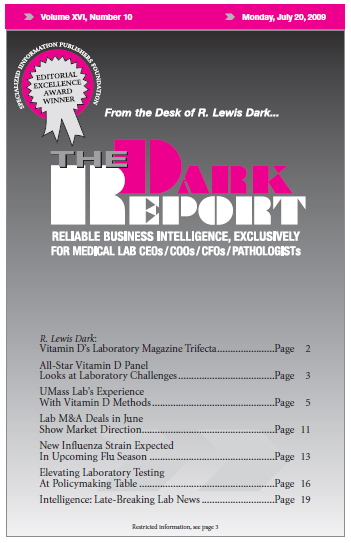CEO SUMMARY: Public health labs continue to monitor for new cases of the A/Novel H1N1 flu, while preparing for what may be a difficult flu season this fall. Having coped with a 10-fold increase in testing volume, public health labs are assessing the lessons learned from the April/May flu outbreak. At the Association of Public …
New Flu Strain Expected In Upcoming Flu Season Read More »
To access this post, you must purchase The Dark Report.


